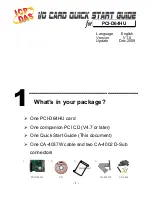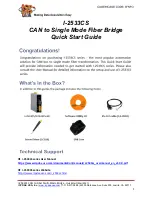
74 • DeviceNet
Network
Communication
WAGO-I/O-SYSTEM
750
DeviceNet
Other interface modules for programmable logic controls (PLCs) are also of-
fered by other manufacturers.
4.3 Network Communication
4.3.1 Objects, Classes, Instances and Attributes
Protocol processing of DeviceNet is object oriented. Each node in the network
is represented as a collection of objects. In the following, several terms con-
nected with them are defined:
•
Object:
Object is an abstract representation of individual components within a de-
vice belonging to each other. It is defined by its data or attributes, its ex-
ternal functions or services available, and by its defined behaviour.
•
Class:
A class includes objects of a product belonging together, it is organized in
instances, e.g. Identity Class, DeviceNet Class.
•
Instance:
An instance is composed of various variables (attributes). Differing in-
stances of a class have the same services, the same behaviour and the same
variables (attributes). However, they can have different variable values,
e.g. different connection instances: Expilict Message, Poll I/O or Bit-
Strobe connection instance.
•
Attributes:
The attributes represent data provided by a device via DeviceNet. They
contain the current values, e.g. a configuration of an input, such as, for in-
stance Vendor ID, Device Type or Product Name.
•
Service:
Services can be applied to classes and attributes. They perform defined ac-
tions, e.g. reading of variables (attributes) or resetting a class.
•
Behaviour:
The behaviour defines how a device reacts as a consequence of external
events, such as changed process data, or as a consequence of internal
events, such as expiring timers.
















































